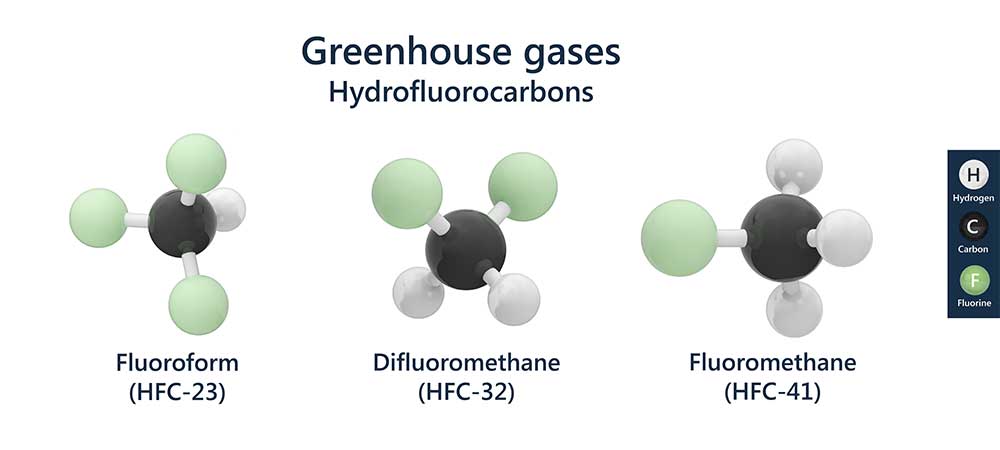
What are hydrofluorocarbons (HFCs)?
Hydrofluorocarbons are organic compounds that are used as a coolant in refrigerators, ACs and several other cooling appliances. They are made of hydrogen, fluorine and carbon. They are produced through a synthetic manufacturing process. They initially replaced Chlorofluorcarbons (CFC) at the Kyoto Protocol, which had proved to be even more harmful to the environment.
Why are HFCs harmful?
While HFCs do not deplete the ozone layer, they are extremely potent greenhouse gases. They tend to remain in the atmosphere and absorb infrared radiation, which would have otherwise escaped into the atmosphere. This capacity to trap heat and thereby further heat up the atmosphere leads to warming up of our already warm planet. However, some HFCs have a low global warming potential (GWP).
What causes hydrofluorocarbons?
HFCs are man-made, and may be released into the atmosphere through leakages in cooling appliances, which use these gases, or if they the appliances have not been properly disposed at the end of their life cycle.
How does it affect me?
More HFCs in the atmosphere mean greater heating up of the planet. This leads to increase in the average temperature of the Earth, thus contributing to the changing climate. Depending on the regions we stay, it may mean hotter summers, colder winters, more droughts or heavier rainfall as one of the most visible signs of climate change, causing discomfort even at a micro level. This also greatly affects the crop yields for instance, and thus impacts the economy, especially an agrarian one like ours.
Why should HFCs matter to us (India)?
As a developing country, India is expected to have a growing market for cooling appliances, such as refrigerators and air conditioners. Considering the global warming potential of HFCs, India has agreed to phase them down if there are viable alternative solutions available. This will help in mitigating climate change.
Is there anything that I can do to mitigate global warming? Does using energy efficient appliances help reduce HFCs?
One of the primary uses of HFCs is in cooling appliances. Buying more energy efficient appliances, such as five-star rated models when purchasing air conditioners, will help in reducing the presence of these gases in the atmosphere, thus leading to a lesser warming effect on the planet.
The GWP values of the various HFCs or HCFCs are generally in the thousands. Conversely, GWPs of climate-friendly alternatives are much lower. The most commonly used alternatives to HFCs and HCFCs and their characteristics are listed in the table below.
| Alternative | Global Warming Potential (GWP) | Properties to be addressed | Commercial availability |
|---|---|---|---|
| Hydrocarbons | 3-5 | Flammable | Immediate |
| CO2(R744) | 1 | High pressure | Immediate |
| Ammonia (NH3, R717) | 1 | Toxic | Immediate |
| Water (R718) | 1 | No risks | Immediate |
| R32 (an HFC) | 675 | Mildly flammable | Immediate |
| HFOs | 4-9 | Mildly flammable | Immediate/Short-term |
| R32-HFO blends | 200-400 | Mildly flammable | Mid-term |
